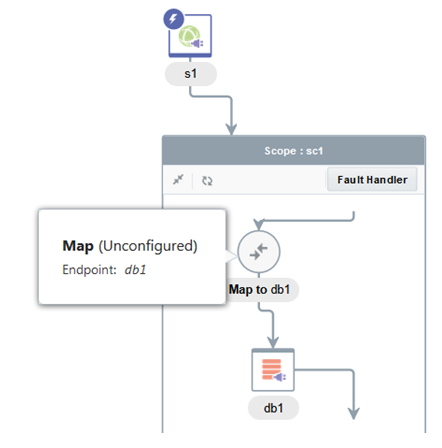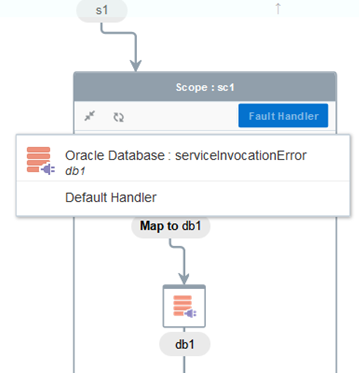Define Fault Mapping in Orchestrated Integrations
You can define fault mappings in integrations. This mapping transforms a Database Adapter fault when used as a target into the source format defined in its WSDL. You add the Database Adapter to a scope action in an orchestrated integration and select this fault in the Fault Handler part of the scope action.
A serviceInvocationError fault mapping is defined in the WSDL
serviceInvocationError provide details about the runtime fault:
-
type: The type of fault. -
title: The title of the fault. -
detail: Information about the fault cause. -
errorCode: Information about the fault code. -
remedialAction: How to fix the fault.
This fault structure is populated during runtime when any exception occurs in an outbound invocation (for example, a primary key violation).
If using the adapter in a map data integration, only reason, detail, and errorCode are available in the mapper.
Assume an exception (for example, NumberFormatException) occurs in an invoke (outbound) adapter. Exceptions are mapped in fault mappings and returned to the source format as defined in its WSDL contract. In this use case, a stored procedure is used that accepts only an integer type. If you invoke the adapter by passing a noninteger value, Oracle Integration reports the fault back to you.
To define fault mapping:




